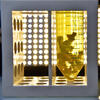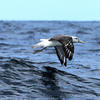You are here
Planktonic Encounters
03.10.2016, by
Plankton, which consists of microscopic organisms of plant or animal origin, comes in a wide variety of shapes—each more surprising than the next. Biologist John Dolan, who studies this fascinating diversity, shares a few specimens seen under his microscope in samples from the Mediterranean Sea and the Pacific and Southern Oceans.
John Dolan is Director of Research at the Laboratoire d'Océanographie de Villefranche-sur-Mer (CNRS / UPMC).

1
Slideshow mode
Our first encounter is with diatoms, plankton of plant origin (phytoplankton) from the waters of the Southern Ocean—the Amundsen Sea to be precise, on the west coast of Antarctica.
John DOLAN / LOV / CNRS Photothèque

2
Slideshow mode
Diatoms are unicellular algae contained in a silica house. Pictured here, the "Rhizosolenia sima forma silicea" (Amundsen Sea).
John DOLAN / LOV / CNRS Photothèque

3
Slideshow mode
"Climacodium sp." diatom (South Pacific Ocean).
John DOLAN / LOV / CNRS Photothèque

4
Slideshow mode
"Triceratium favus" diatom (Bay of Villefranche-sur-Mer, southern France).
John DOLAN / LOV / CNRS Photothèque
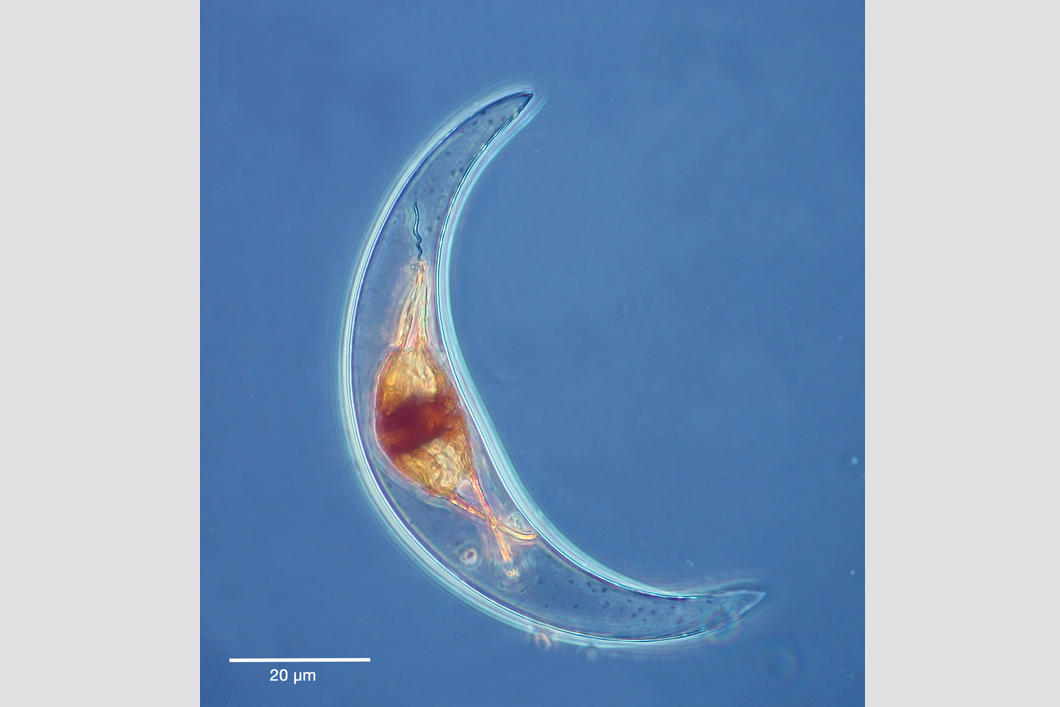
5
Slideshow mode
Pictured here is a dinoflagellate from the waters of the Bay of Villefranche, on the French Mediterranean coast. This area has a rich plankton biodiversity, due to the Ligurian-Provencal current that flows nearby. "Pyrocystis lunula" dinoflagellate (Bay of Villefranche-sur-Mer, southern France).
John DOLAN / LOV / CNRS Photothèque

6
Slideshow mode
Tintinnids, a type of animal plankton (zooplankton). These are unicellular organisms that “graze” on microscopic algae. Ciliated tintinnid "Codonellopsis orthoceras" (South Pacific Ocean).
John DOLAN / LOV / CNRS Photothèque
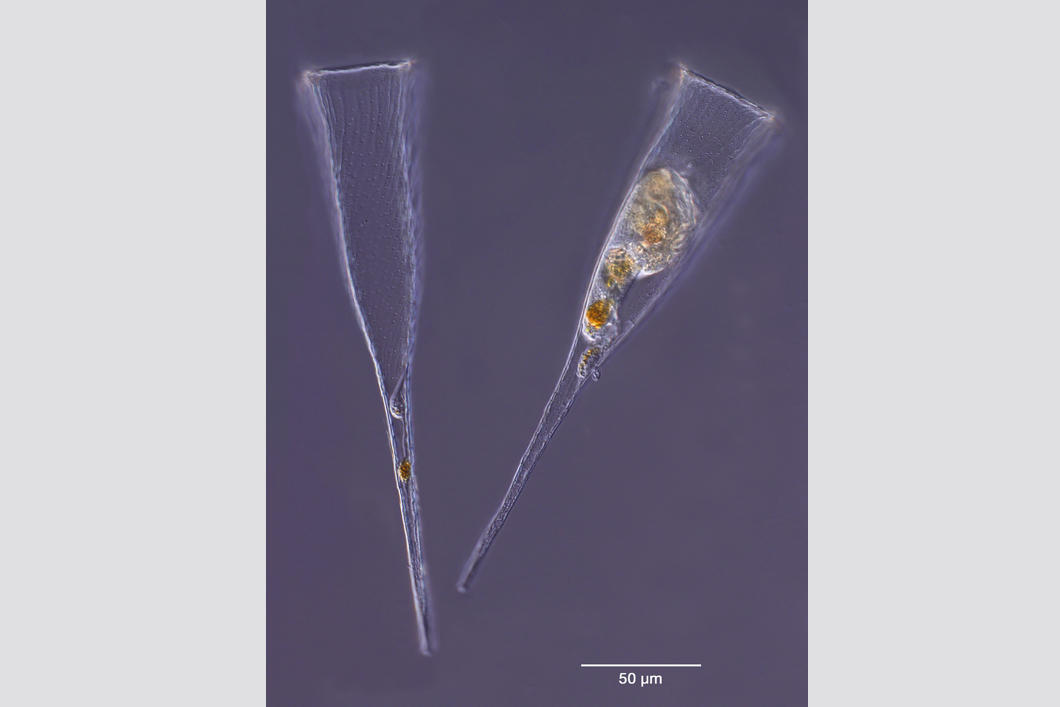
7
Slideshow mode
In most cases, tintinnids create a shell that is transparent. The left shell is empty, while a living organism is still retracted into the right shell. Ciliated tintinnid "Rhabdonella spiralis" (Bay of Villefranche-sur-mer, southern France).
John DOLAN / LOV / CNRS Photothèque

8
Slideshow mode
This ciliated tintinnid from the genus "Cymatocylis” (Amundsen Sea) is only found in the Southern Ocean.
John DOLAN / LOV / CNRS Photothèque

9
Slideshow mode
Enter the world of radiolarians. As tintinnids, these animal organisms prey on microscopic algae.
Pictured here, a "Challengeria balfouri" radiolarian (Amundsen Sea).
John DOLAN / LOV / CNRS Photothèque

10
Slideshow mode
Animal plankton (zooplankton) consume and often control phytoplankton. "Rhizoplegma boreal" radiolarian (Amundsen Sea).
John DOLAN / LOV / CNRS Photothèque

11
Slideshow mode
Like diatoms, radiolarians are contained in an external skeleton of silica. "Pterocanium sp.," radiolarian (South Pacific Ocean).
John DOLAN / LOV / CNRS Photothèque
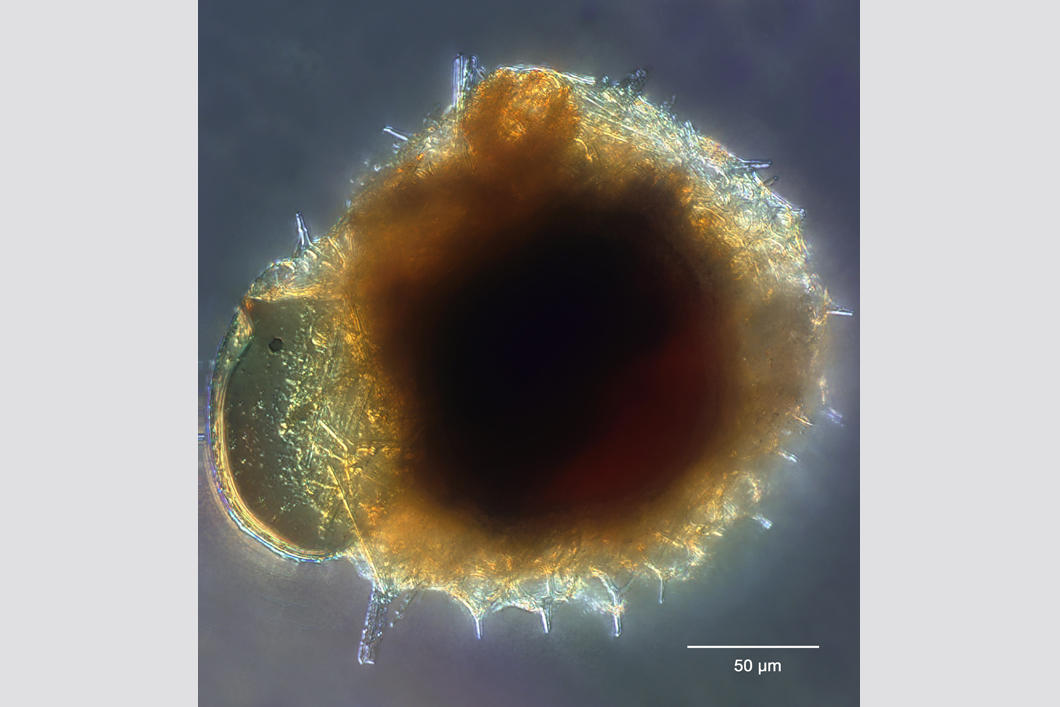
12
Slideshow mode
Recently inaugurated, the oceanographic vessel Sagitta III will enable researchers to collect plankton off the Bay of Villefranche, up to 1000 m deep. This should allow for many new discoveries. "Phaeosphaera nucleolongata" radiolarian (Bay of Villefranche-sur-Mer, southern France).
John DOLAN / LOV / CNRS Photothèque
Explore more
Life
Article
11/26/2025
Article
11/24/2025
Article
09/24/2025
Article
09/01/2025
Article
08/07/2025
Marine biology
Article
10/10/2023
Video
02/23/2023
Slideshow
12/07/2021
Article
12/20/2020
Article
06/18/2018
Plankton
Infographics
12/14/2015







